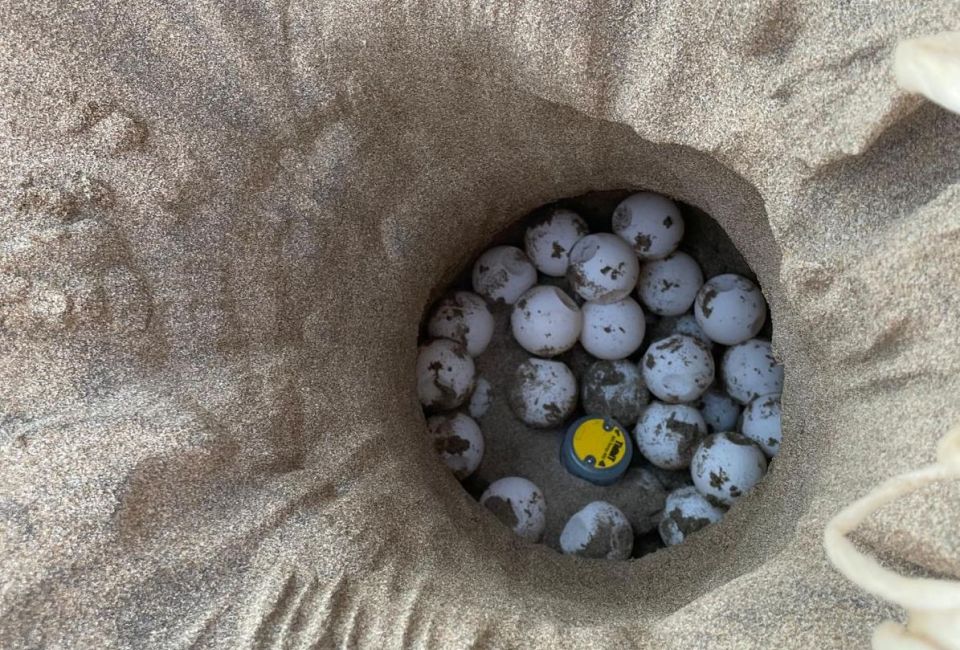
Record levels of sea turtle nesting on the Western Mediterranean coast this season
The beaches of the western Mediterranean have been experiencing a rise in the numbers of nests by loggerhead turtles (Caretta caretta) over the last decade. This increase may be due to the species engaging in a process of colonisation as a result of climate change. This process is considered very important for its survival in view of the evidence and predictions of increasing feminisation of the species and a reduction in the viability of the offspring on the beaches where eggs are laid in their original nesting areas.
However, this incipient colonisation is taking place in areas with high levels of human occupation, including the Spanish coast, and as such adequate management is required if the eggs are to be laid successfully near humans.
The recent emergence of this colonisation process has required all the stakeholders involved, including those in the scientific field and government agencies, to develop new capabilities over the past few years. The main factors that can have a negative impact on this growing population are ignorance among the public, the lack of scientific information, changes on the beaches where eggs are laid which affect the eggs' successful incubation, and the effectiveness of the management measures that are being adopted.
A very busy start to the 2023 season
The first sea turtle nest reported on a Spanish beach this season appeared on Can Pere Toni beach in Palma, in the Balearic Islands, at the beginning of June. This was quickly followed within a few weeks by other nests reported on beaches in Catalonia, the Valencian Community, Murcia and Andalusia. Some failed attempts at nesting have also been reported. The research teams have been able to observe and work with several nesting female turtles as a result of these events.
Three of the nests in Catalonia are located in the Ebro Delta, which may be indicative of this natural area's growing importance as a new region for nesting. A significant detail in 2023 is that the nest reported on Sa Riera beach in Begur is the northernmost located on the Iberian Peninsula to date.
All this activity is creating a very serious challenge for the networks responsible for monitoring the nesting, and the local and regional governments and academic institutions involved, which have activated the recently developed protocols in both Catalonia and in Spain's other coastal communities aimed at conservation of the turtles and collecting scientific data.
This increase in nesting activity on Spanish beaches is consistent with events in other areas of the Western Mediterranean, where Italy is a case in point: nearly one hundred nests have been reported in the first few weeks of the season. Regions such as Campania have recorded increases of more than 50% compared to previous years.
The InGeNi-Caretta project
Thanks to funding from the Biodiversity Foundation, a consortium consisting of the BETA Technological Center at the University of Vic - Central University of Catalonia, the University of Barcelona, the Biodiversity Research Institute (IRBio) at the University of Barcelona, the Polytechnic University of Valencia, in partnership with the University of Valencia and the Doñana Biological Station, has begun work on the InGeNi-Caretta project.
This multidisciplinary project involves a research team consisting of leading experts on sea turtles, and it aims to produce the scientific knowledge necessary to understand this unique phenomenon of colonisation, and to facilitate decision-making relating to the planning and management of this endangered species on the Spanish coast. The results of the InGeNi-Caretta project will lead to improvements in conservation measures to protect the species, particularly with regard to its nesting activity on Spain's Mediterranean coasts.
The project involves various actions. First, a detailed study will be carried out on the potential suitability of the beaches on the Spanish coast for nesting by sea turtles, taking into account their physical and chemical characteristics, and improving the definition of the environmental parameters on the nesting beaches. Second, it will study the number, origin and behaviour of the nesting turtles by means of genomic studies of the nests, as well as their biological effectiveness, the number of eggs, the development rate of the embryos, and the viability of the young. Finally, it will combine all the data obtained to assess the impact of the offspring's genotype on their dispersion, viability and growth.
The consortium also hopes to study the behaviour of the females and their young using satellite telemetry and by studying stable isotopes. By doing so, it will be possible to use their movements to establish the location of their feeding areas and how the females use the habitat before they lay eggs and subsequently disperse, in order to determine which areas are important for nesting. Finally, the success of the conservation measures will be studied ex situ in order to determine the hatching percentages and the parameters of growth and viability among hatchlings in captivity to enable head-starting.
InGeNi-Caretta is supported by the Biodiversity Foundation of the Spanish Ministry for Ecological Transition and the Demographic Challenge (MITECO) within the framework of the Recovery, Transformation and Resilience Plan (RTRP), funded by the European Union – NextGenerationEU.